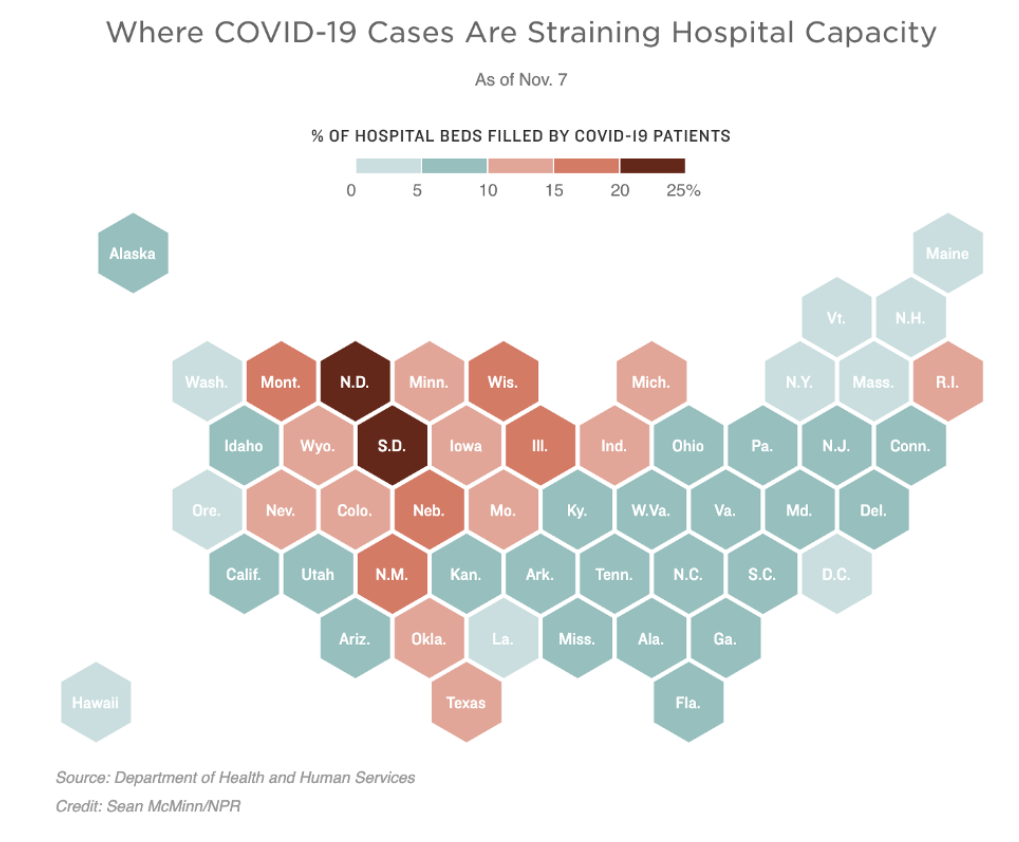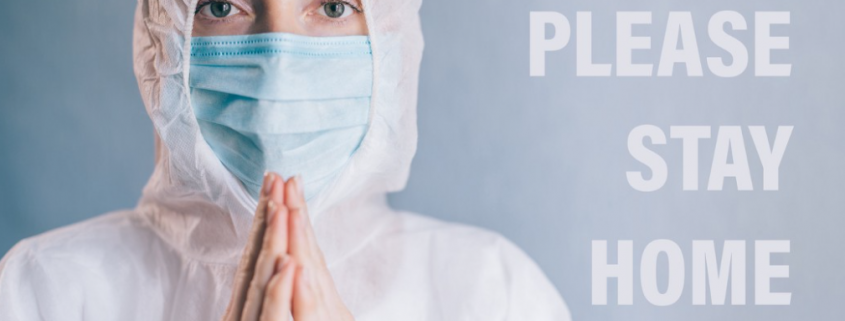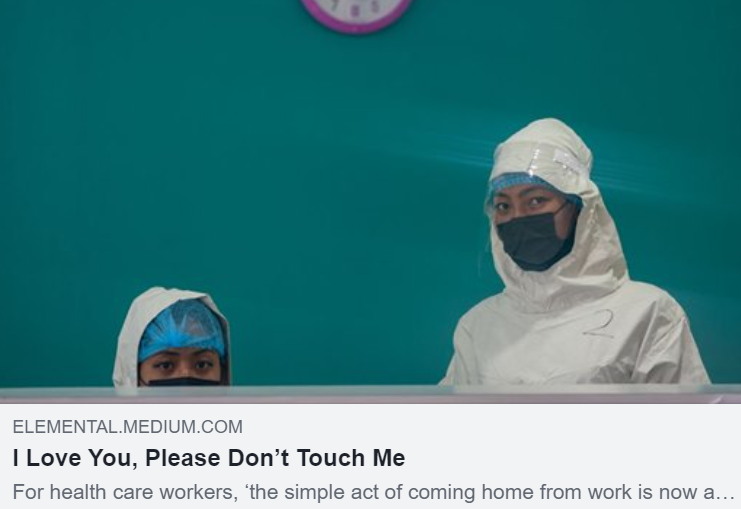Doctors Sound the Alarm on Covid-19 Cases. Is Anyone Listening?
We are running out of beds, and it is time to step up.
The United States now has 12 million confirmed Covid-19 cases. On Thursday, we had a record-setting day of 187,000 new cases of the coronavirus. Over 250,000 Americans have lost their lives, and 100,000 more deaths are expected before President-elect Joe Biden takes office.
We’re approaching the holidays in the middle of a pandemic, and flu season is right around the corner. We must take note of the doctors and scientists sounding the alarms.
Public health messages abound are begging the public to avoid Thanksgiving family gatherings, but many still plan to travel and enjoy turkey and stuffing as though 2020 was a typical year.
States are reaching hospital surge capacity all over the country as the dark winter approaches. Reports from Salt Lake City, El Paso, Wisconsin, and the Dakotas offer dire news as hospitals run out of beds. Texas and all of the Midwest are seeing exponential growth in new cases.

Image: npr.org
At the start of the pandemic, flattening the curve was the goal. The idea was to prevent illnesses from happening all at the same time. We wanted to flatten the curve to avoid surpassing our health system’s capacity to accommodate the needs of the acutely ill. We failed. Miserably.
We are way past the point of flattening the curve. As you see below, Covid-19 patients are filling up the available hospital beds. To make it worse, influenza cases have not yet hit most cities.

Image: DHHS via npr.org
As testing capacity continues to improve across the country, the number of diagnosed cases will increase. While an asymptomatic exposure warrants testing at local facilities, large lab companies are running out of testing supplies, reagents, and technicians to meet the demand.
As community spread continues, it will be tempting for mildly symptomatic patients to go to a hospital or urgent care facility for testing. For the vast majority of patients, an ER visit may lead to unintended and tragic consequences.
Only those experiencing severe symptoms, such as difficulty breathing, need in-person medical evaluation. Most Covid-19 patients will experience a flu-like illness without respiratory distress. Those with respiratory symptoms should call a health care provider for guidance. Expanded telehealth services offer quick and easy solutions for medical advice.
Each patient who presents to an ER, urgent care center, or physician’s office exposes other patients and, importantly, medical providers to the infection. Over 1,700 health care workers have tragically lost their lives to Covid-19. Health care infections limit the number of available providers to treat others. If doctors, nurses, and other hospital staff are sick, who will care for the patients?
Remember, the hospital capacity problem is not only about caring for Covid-19. People will still have heart attacks, strokes, appendicitis, gallstones, and other medical ailments. If the hospitals are full, there is no way to care for these patients. In my OB-GYN specialty, the coronavirus does not stop pregnancy. Pandemic or not, babies are being born — and each new birth represents hope for humanity. Pandemic or not, babies are being born — and each new birth represents hope for humanity.
The Covid vaccine will not help us this winter
Even if a safe and effective Covid-19 vaccine were to be approved tomorrow, the timeline shows there is zero chance a vaccine plays a meaningful role in the next three months.
The leading vaccine candidates require two doses one month apart with a three-week window to develop immunity inducing antibodies. This necessary dosing protocol extends the timeline from receipt of the vaccine until one can reliably count on immunity.
Once the Food and Drug Administration (FDA) approves a vaccine, the challenging process of distributing vaccines to 328.2 million Americans begins.
Lets put politics aside and care for each other
Social isolation. Loneliness. We are all tired and restless. Everyone wants to get back to normal life. There is a pathway forward. Our world requires a collective effort to navigate through the pandemic. Each of us must make sacrifices to squelch the viral scourge.
But not all Americans agree on how society or our government should handle the pandemic. While we celebrate the American diversity of opinions, in this present moment, we each must make decisions about how we live our day-to-day life.
We are living in Pascal’s Wager.
Any of us may be asymptomatic carriers of SARS-CoV-2. Each of us may spread the virus before symptoms began and inadvertently pass the infection to another person.
What can I do at home if I get sick?
The Centers for Disease Control and Prevention (CDC) recommends those who think they may have Covid-19 and are not having severe symptoms to:
1.Stay home except to get medical care.
2. Monitor your symptoms carefully. If your symptoms get worse, call your health care provider immediately.
3. Get rest and stay hydrated. Take over-the-counter medicines, such as acetaminophen, to help you feel better.
4. If you have a medical appointment, notify your health care provider ahead of time that you have or may have Covid-19.
5. Stay in a specific room and away from other people in your home. If possible, use a separate bathroom. If you must be around others, wear a mask.
The CDC recommends prompt medical treatment if you have:
- Difficulty breathing
- Chest pain
- Confusion
- Inability to wake or stay awake
- Bluish lips or face
Covid-19 is spread through person-to-person contact via respiratory particles. Breathing, talking, sneezing, and coughing spread large droplets. When we gather in groups, each of us is only as safe as the least compliant person around us.
Each American must follow the mitigation strategies to protect themself and others. Stay at home. Wash your hands. Practice social distancing. Get your flu shot.
And remember: Wearing a mask is the easiest thing we can do to slow the spread of coronavirus and save lives.
Thank you Medium Coronavirus Blog for publishing this article on Medium.
Blog Author: Dr. Jeff Livingston
Main Blog Photo By: ielanum Istock/Getty













